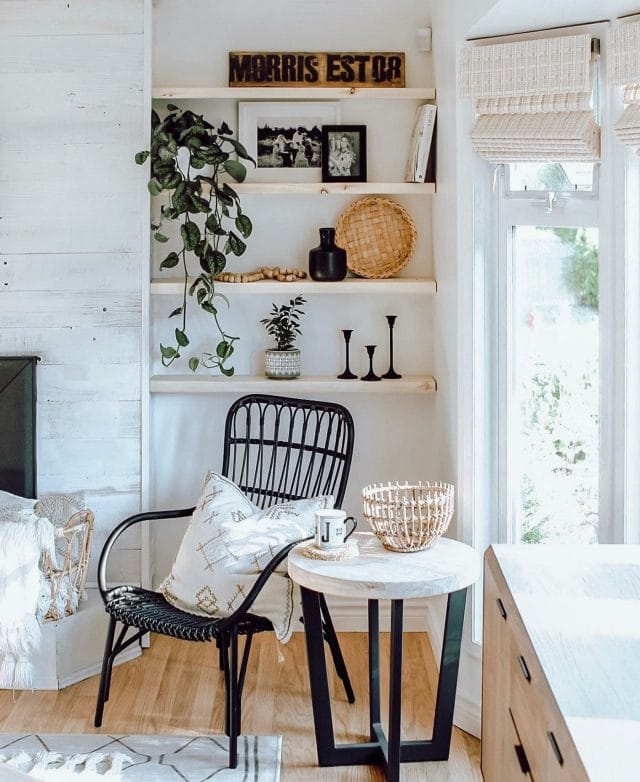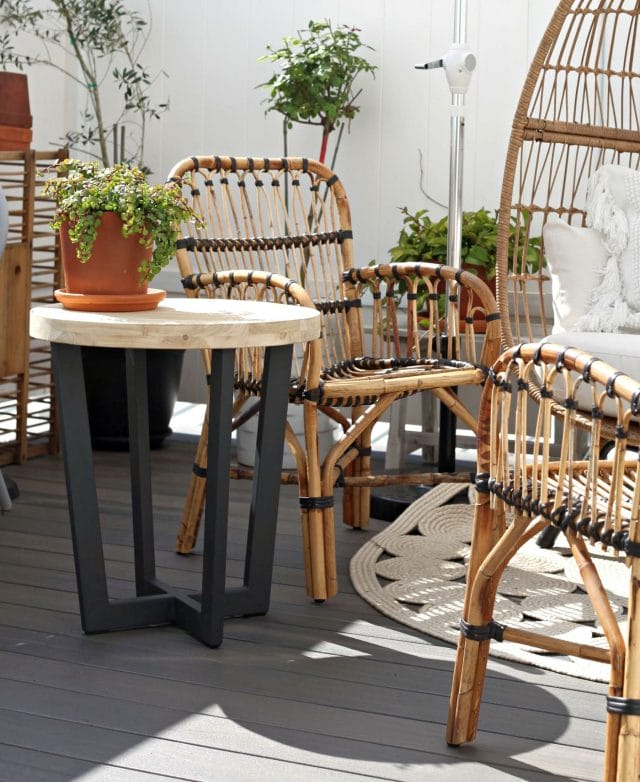The Expert’s Guide to Wicker and Rattan
Certain things should be left in the ’70s: Jello salad, smoking on airplanes, and some more-than-questionable politics. But despite the shortcomings of this groovy decade, the ’70s also popularized the gifts that keep on giving: rattan and wicker furniture.
You may be picturing the dusty white-painted wicker set from your grandmother’s cluttered sunroom, but today’s woven furniture is different. “Rattan and wicker furniture is rising in popularity because its vintage look and relaxed feel blends well with so many decor styles, from boho to mid-century,” Zoe Garred, our Director of Product Development explains. “The classic style is being updated with innovative materials and fresh silhouettes to appeal to a modern audience.”
To help you figure out which woven furniture is right for you — and how to extend the life of your wicker — we put together this expert’s guide to wicker and rattan.

What’s the Difference Between Rattan and Wicker?
You wouldn’t be alone in thinking that rattan and wicker are the same thing. It’s like “cat” and “feline,” or “pint of mint chocolate chip ice cream” and “my dinner” right? Not quite.
“The difference is that rattan is a material, whereas wicker is the style and method of weaving,” Zoe explains. “Wicker can be woven from rattan as well as many other natural or synthetic materials, which is where the confusion often lies.”
Got that? Using the terms “rattan” and “wicker” interchangeably is like using “potato” and “mashed” to mean the same thing. Potato (or rattan) is the material, where mashed (or wicker) is the technique. A wicker sofa like the Lucara, for example, could be made from synthetic rattan (like this particular style is), natural rattan, bamboo, cane, or any other suitable material and still qualify as wicker due to its construction.
Fun fact: While it surged in popularity during the 1970s, wicker is actually one of the oldest furniture-making techniques in history. Wicker furniture has been traced back to origins in Egypt, with a wicker chair found in King Tut’s tomb dating back more than 3,000 years. Talk about durable.

Natural Rattan vs. Synthetic Wicker
When you pit the words “natural” and “synthetic” in an argument against each other, there are usually hardcore advocates gunning for either side. In the case of natural and synthetic wicker, however, both sides come out winners. They’re both beautiful and unique, it just depends on what your specific needs are.
Natural rattan is meant to be treated as an indoor material. If you take your natural rattan piece, such as the Daisy Lounge Chair, outside for a summer baby shower, you’ve got to bring it back inside after the last piece of cake is eaten.

Synthetic wicker (also known as resin wicker, synthetic rattan, all-weather wicker, or HDPE wicker) on the other hand, is typically made from an engineered resin material that replicates the look of natural wicker — but is highly resilient in outdoor environments.
“We use high-end synthetic wickers in our modern outdoor products to replicate the classic mid-century look of this furniture style, but with high-durability and low-maintenance properties,” Zoe explains. “The powder-coated aluminum we use has been artfully painted to replicate natural rattan. The results are easy to care for furniture pieces that make your modern outdoor space beautiful.”

How to Clean and Care for Rattan and Wicker
Now that you know the differences between rattan, wicker, and synthetic wicker, it’s time to learn how to care for your choice of woven material. We spoke to our product-care experts here at Article to get some basic dos and don’ts when it comes to cleaning and caring for your pieces.
Don’t: Leave your natural rattan outside 24/7.
Do: Store your natural rattan inside after use.
While you may see photos of rattan furniture in an outdoor space, there’s (hopefully) more to these images than meets the eye.
As we mentioned, natural rattan pieces need to be taken inside after you’ve enjoyed your day in the sun or shade. You might be thinking that they’ll do fine in the warmth of the sunshine, but think about your own skin after a day soaking up those hot, hot rays. Natural rattan has minimal, if any, UV resistance so it will fade, dry out, and crack in sunny and hot conditions. This may also result in regretful sobbing on the part of the owner.
Speaking of moisture, natural rattan is porous — and boy, is it thirsty. This means it will soak up any dewiness when left in rainy or damp conditions, which leads to mildew and rotting. Neither are cute, so make sure you’re mainly using your natural-rattan pieces on a covered patio and storing them inside when you’re done.
Although resin or synthetic wicker is much more durable, it still deserves your love and respect. Ensure you’re covering it up when not in use, and following the general care instructions we outline in our outdoor furniture cleaning guide.

Don’t: Let dust build-up.
Do: Wipe regularly with a soft cloth.
It’s easy for dust and dry debris to build up on furniture that’s being left outside. Honestly, it would be a bit spooky if you didn’t find any dirt or dust on your outdoor pieces. The trick here is to make sure you’re spending a bit of quality time with your wicker and dusting it regularly. Not only will this keep your modern furniture looking its best, but it helps avoid the caked-on, muddy mess that can happen when dust comes in contact with moisture.
Wipe with a soft, slightly damp cloth, and then, if you really want to go for it, you can use a super soft-bristled paintbrush to get into any nooks and crannies.

Don’t: Use a pressure washer on any wicker furniture.
Do: Use a nylon brush to clean woven pieces.
While all those pressure-washing videos on the internet are extremely satisfying to watch, please don’t take this tool to your woven furniture. Pressure washers are way too strong for wicker furniture — including synthetic wicker. When you direct such a high-pressure stream of water onto these pieces you’re risking cracking, breakage, and inviting mildew and rot to occur everywhere you don’t want it.
Instead, use a nylon brush and, as mentioned above, a minimally damp cloth to wipe your outdoor furniture. A good rule of thumb? If it’s not gentle enough to brush your teeth with, don’t use it on your wicker furniture.
“Underwater Basket Weaving” this is not, but our guide to wicker and rattan is here to help you choose the best woven furniture for your space — and make sure your perfect pieces are around for many years to come.

